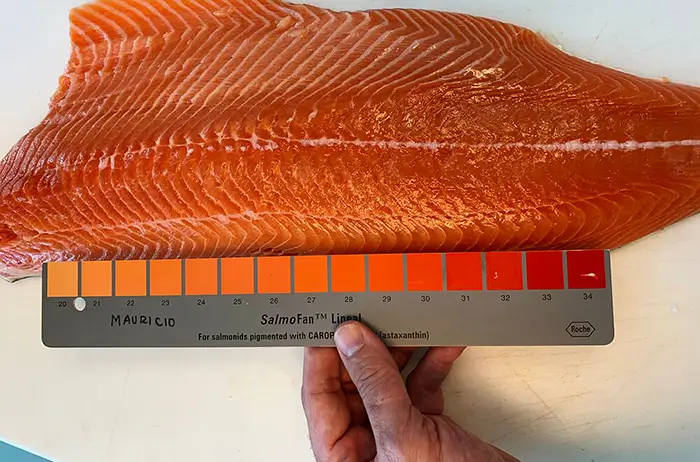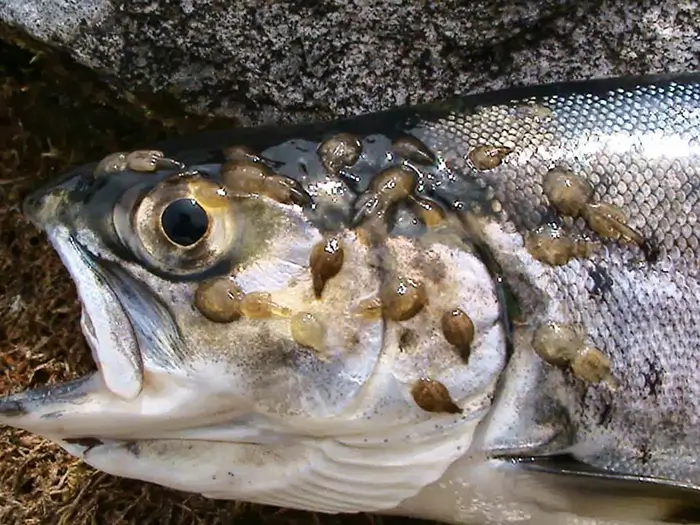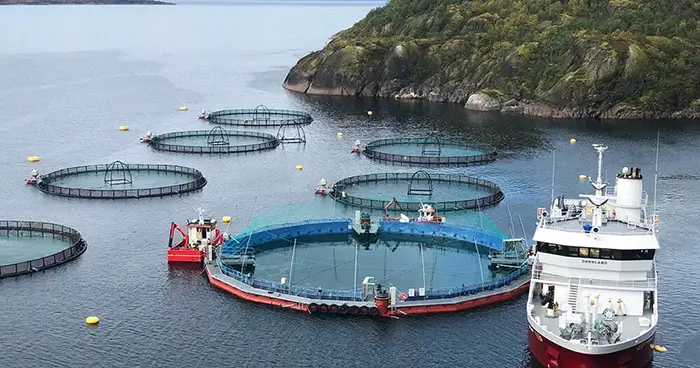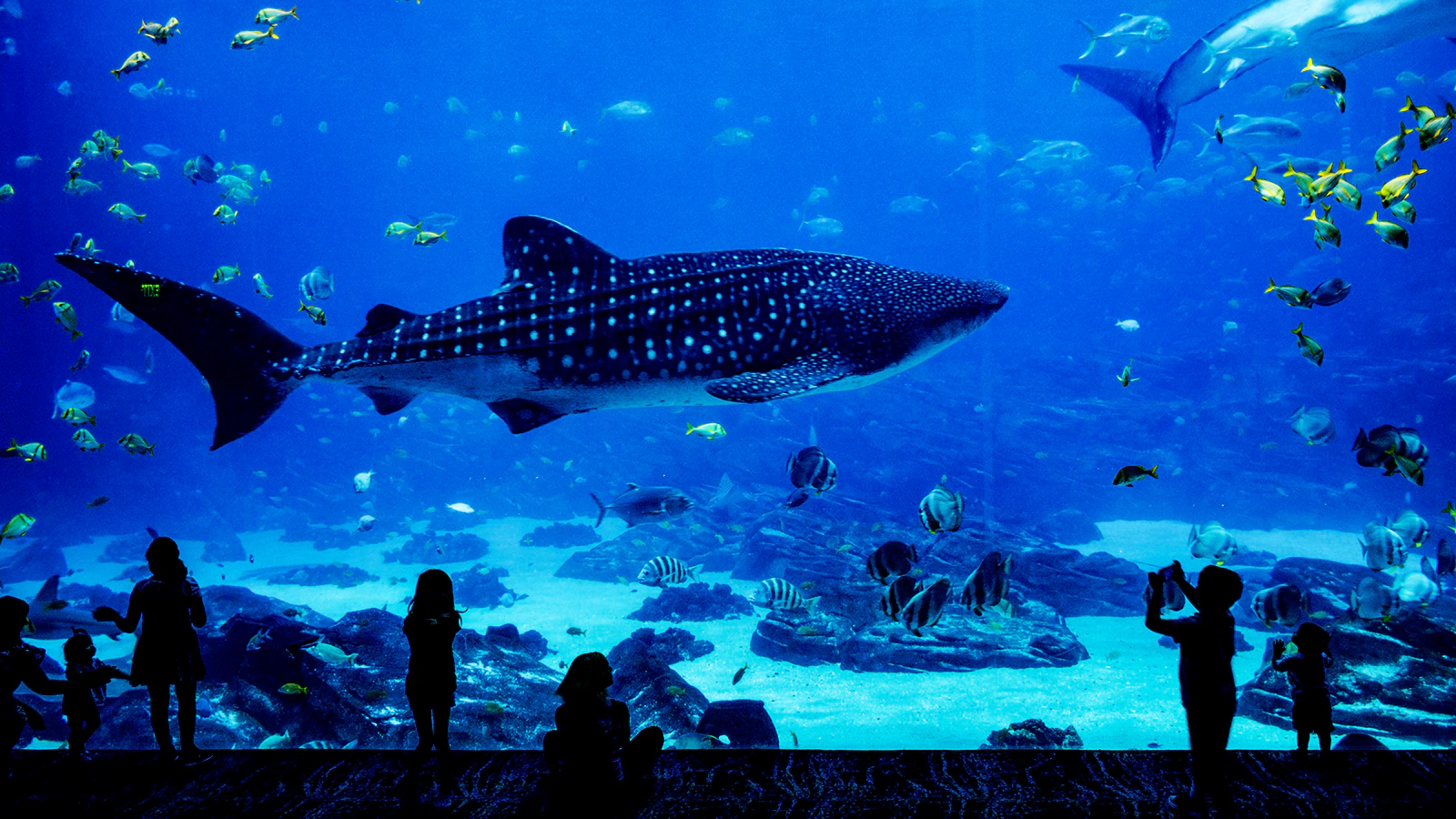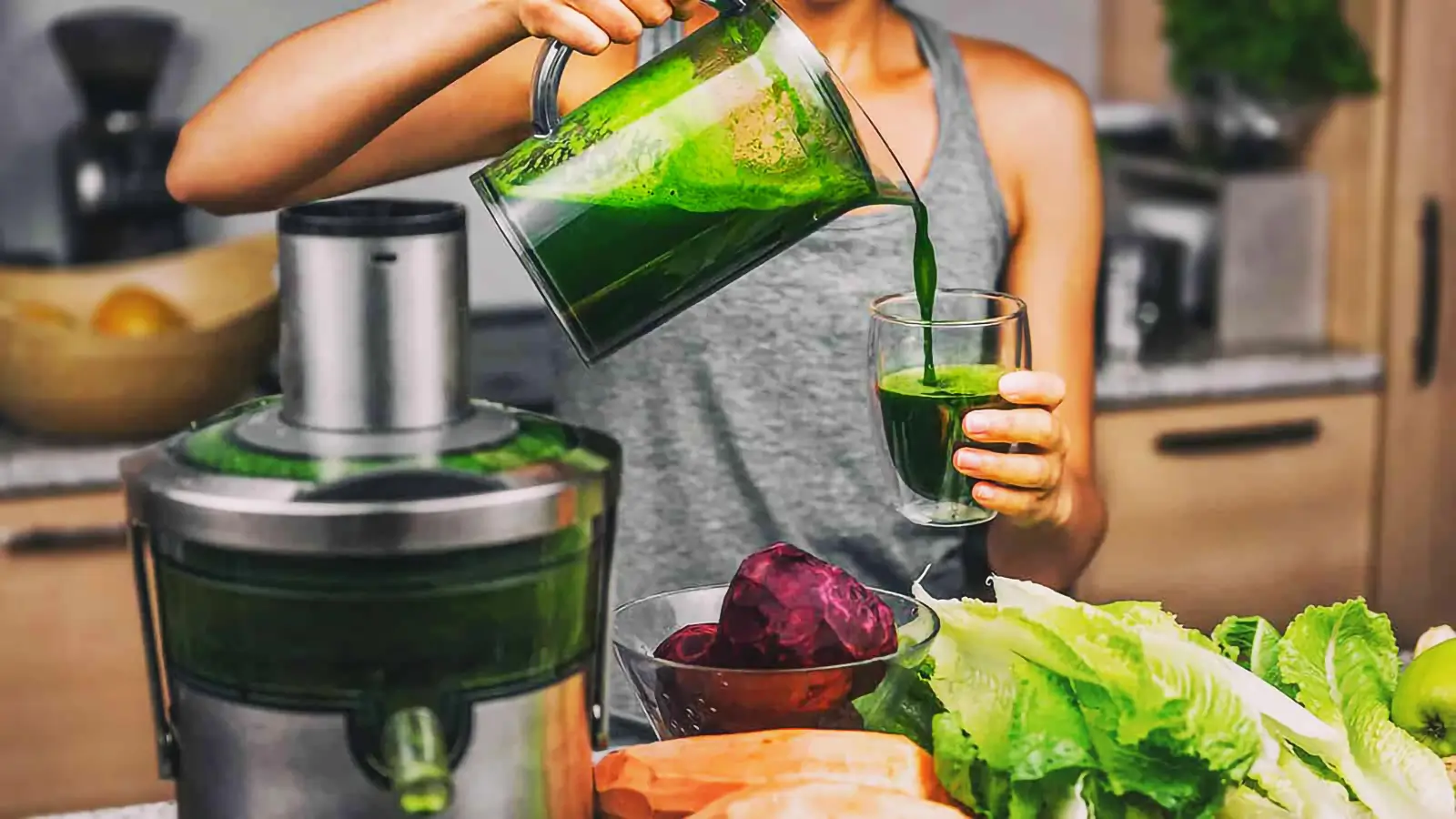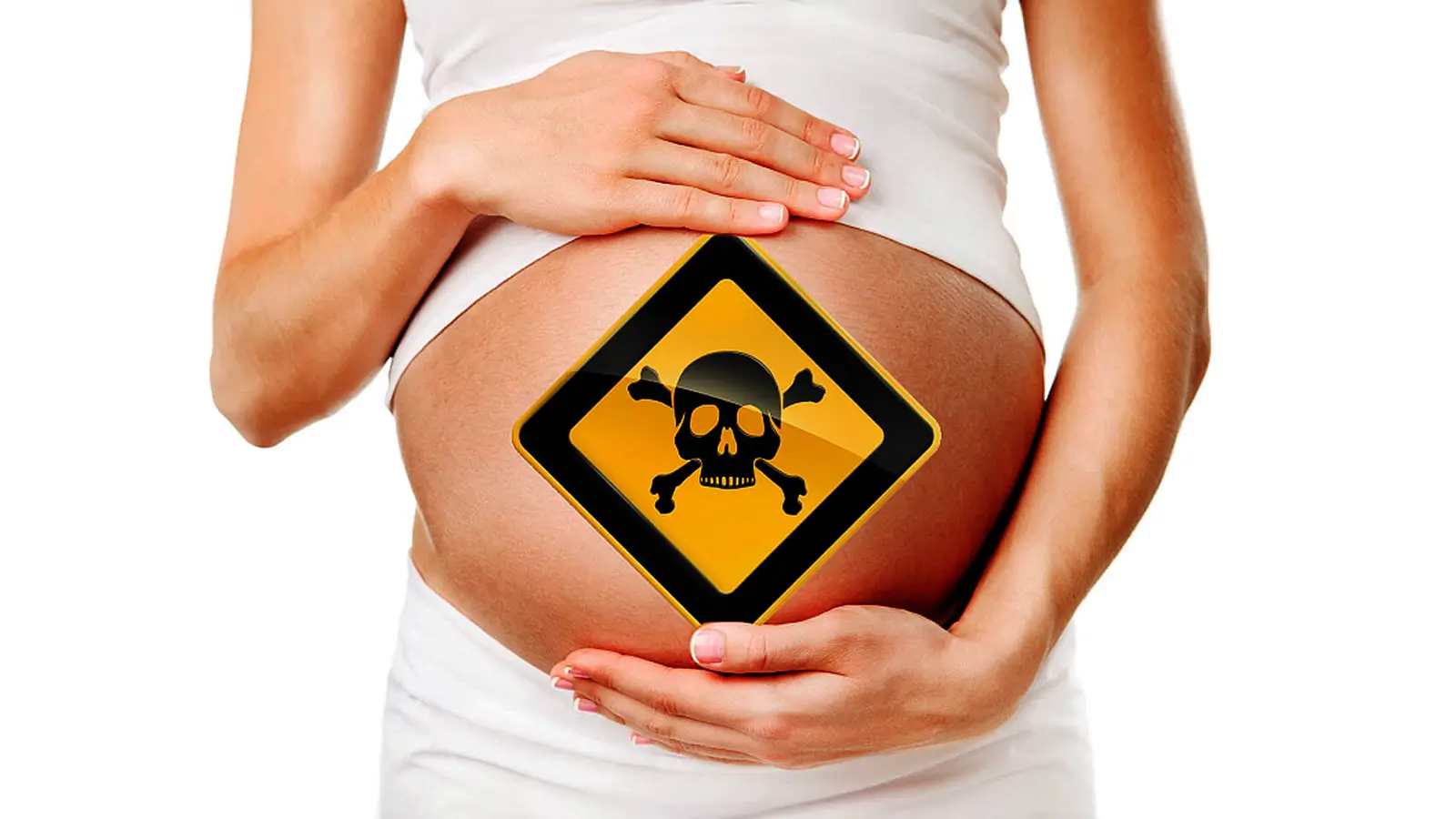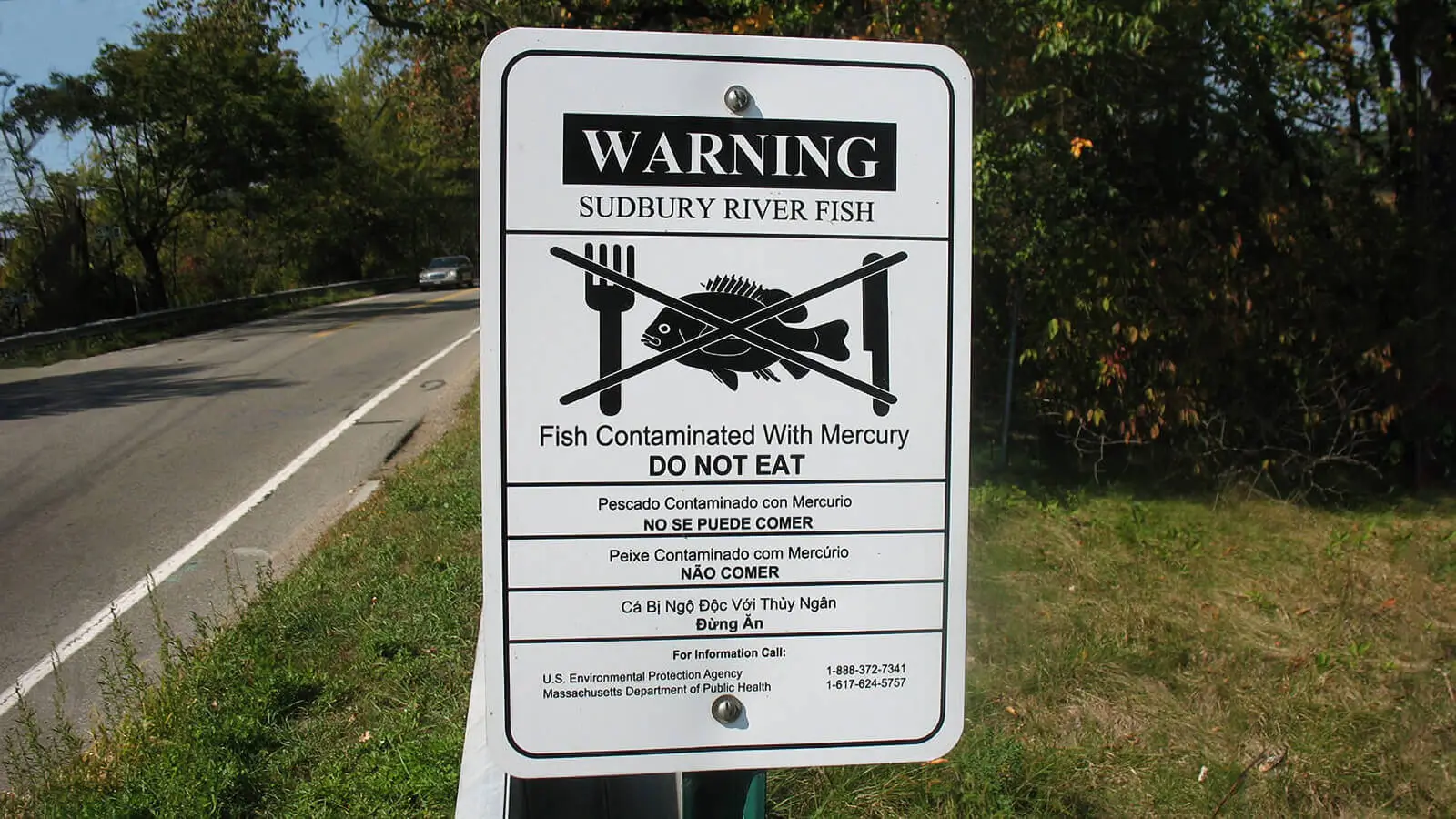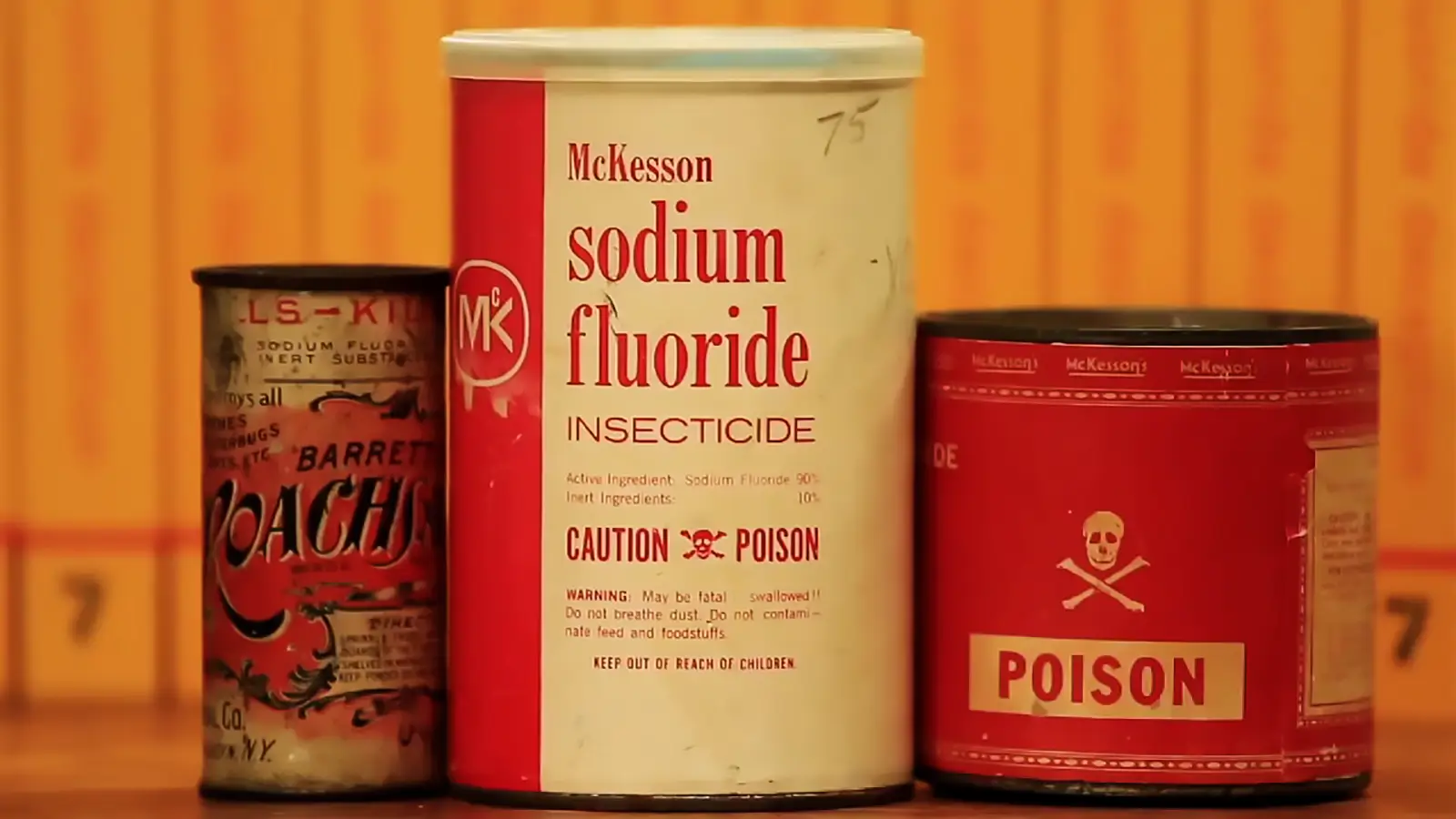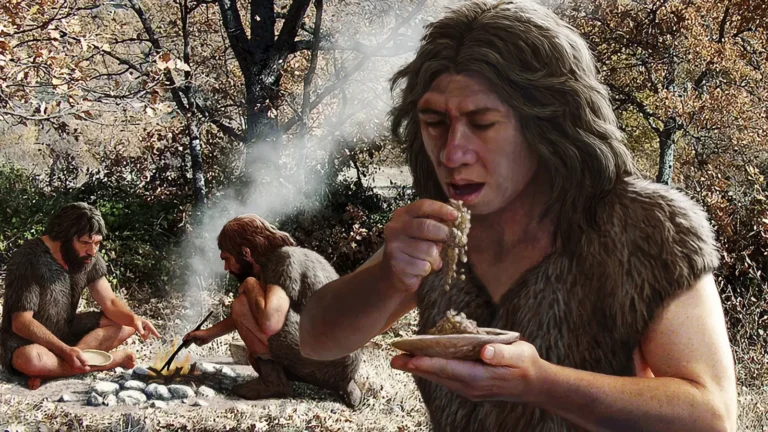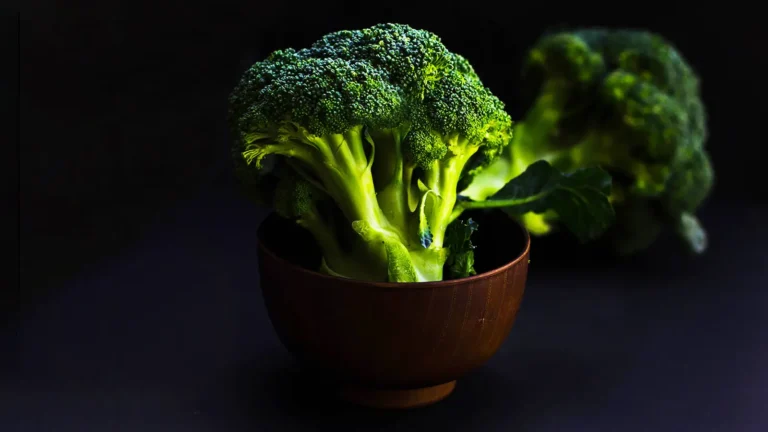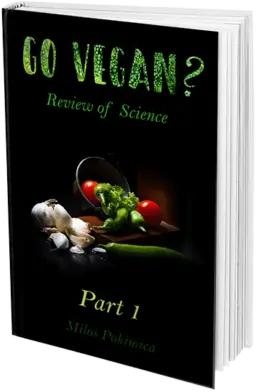Farmed fish- “Cesspool” paradise
Farmed fish have up to ten times more pollutants. After vaccination fish is always on antibiotics and pesticides.
Milos Pokimica
Written By: Milos Pokimica
Medically Reviewed by: Dr. Xiùying Wáng, M.D.
Updated June 9, 2023Because of the increasing need for seafood and fish and the fact that our entire ocean is becoming depleted fish will mostly if not completely be farmed fish as a rule. Currently over half of all fish are farmed fish. World Bank estimates that by 2030 around two-thirds of all seafood would be farm-raised. The most common farm-raised fish are tilapia, salmon, catfish, sea bass, and cod.
Farmed fish have up to ten times more pollutants.
Samples of farmed salmon have shown that it contains eight times the levels of PCBs compared to wild salmon, four times the levels of commercial beef, and 3.5 times that of other seafood. In a couple of studies, they analyzed more than 700 salmon samples from around the world. Most of these toxins are stored in the fat of the fish.
It is the same story if we would compare game meat with the meat of the farm-raised animal.
Much of the pollutants came from food that is given to the farmed fish. Food is the same as food for other farm animals and if chicken and pork have bioaccumulation of POPs (persisting organic pollutants) so would the fish but because the fish are enclosed in water tanks the situation gets worse because fish then starts to accumulate the pollutants from the water as well.
Fish waste and also uneaten feed will drop to the bottom beneath these farms and start to decompose.
Average size salmon farms will produce the amount of excrement equivalent to the sewage of a city of ten thousand people. It is the breeding ground for bacteria that consume oxygen, and oxygen is vital for marine animals, especially shellfish and other bottom-dwelling sea creatures. Also, the excrement of the animals themselves is used as fish feed.
Chickens only use up to 30 percent of the nutrients from their feed. That means that 70 percent of nutrients are still in their droppings. Fish can eat those droppings and absorb all of the remaining protein, carbohydrates, vitamins, and minerals. These droppings if uneaten will also fall and settle at the bottom. Then, with time, insect larvae will develop, and the fish will eat the larvae that are filled with pollutants from the excrement themselves. Not only that but the transfer of pig waste is common practice too. It is an economically sound design technique known as integrated livestock-fish farming. Waste from chickens, ducks, and pigs is transferred directly to the fish farms. Fish like tilapia and carp use plankton as a primary food source. If the dosage is right, manure will give a massive boost to the growth of the plankton in the pounds. This fertilization of the fish pounds will dramatically improve the fish’s growth and the level of toxicity.
Because in farms fish do not eat wild food only the feed they lack astaxanthin. Astaxanthin is a red pigment from algae that algae use as a defense against UV light and represent one of the most potent antioxidants in marine habitats. The pink color of salmon and for example, the pink color of pink flamingos are a consequence of astaxanthin consumption. Pink flamingos are born white. In farming conditions, fish lack a wide variety of phytochemicals that they will naturally eat in the ocean, so they are given dyes. Farmed salmon regularly has dye added to it. Die is synthetically produced carotenoid astaxanthin that is used as a colorant. It even has different shades that range from carophyll pink from Roche to lucantin pink from BASF. These dyes are a scam. They have no purpose. Their only job is to fool you, the consumer, into thinking the product is natural-looking, healthy, and flavorful.
Besides farming waste, the crowded conditions that these fish are in will lead them to be more susceptible to disease as well. It can be compared to regular farming which is a breeding ground for infections and parasites. In the ocean, fish is scattered and infections will typically exist at a minimal level. In densely packed oceanic feedlots, diseases and parasites can run rampant. In order to cope with these conditions farmed fish are vaccinated as minnows. After vaccination fish is always on antibiotics and pesticides. One of the most significant problems for the industry is sea lice. In the wild usually, it is not problematic at all, but in the fish tanks, it is an entirely different story. At the first sign of an outbreak, farmers will add substantial amounts of pesticides to the feed.
Because they are fed with fish feed, they also lack omega-three fatty acids. Fish in the wild get omega-three from algae. Fish feed is nothing more than grounded fishmeal and vegetable protein and that mixed together with the help of binding agents such as wheat. In all types of fish examined, the amount of omega-three fats was considerably higher in wild fish. Generally, farm-raised fish will be cheaper, will have 10-30% more fat than wild-caught fish (and that is not omega-3 fatty acids as propaganda regurgitate but just fat which you already get too much of) with a higher level of toxicity and lower-level if any at all of the omega-three acids.
The solutions are closed systems. They treat and then recycle water and don’t contaminate nearby wild habitats but that way of fish production is much more expensive, and we forgot that wild fish is polluted just by itself. The inflammatory potential of clean, unpolluted fish just by itself is far higher than that of a hamburger or pork bacon. Also, then we have pollution on top of that.
If you think that eating salmon is healthy, you as well might just go with the bacon. All farmed fish and shrimp are just poison. Shrimp and tilapia are some of the dirtiest. Most of the shrimp and tilapia that you see in the markets and stores are from farms.
References:
Passages selected from a book: Pokimica, Milos. Go Vegan? Review of Science Part 2. Kindle ed., Amazon, 2018.
- Mo, Wing Yin et al. “Use of food waste, fish waste and food processing waste for China’s aquaculture industry: Needs and challenge.” The Science of the total environment vol. 613-614 (2018): 635-643. doi:10.1016/j.scitotenv.2017.08.321
- Dórea, José G. “Fish meal in animal feed and human exposure to persistent bioaccumulative and toxic substances.” Journal of food protection vol. 69,11 (2006): 2777-85. doi:10.4315/0362-028x-69.11.2777
- Costa, Lucio G. “Contaminants in fish: risk-benefit considerations.” Arhiv za higijenu rada i toksikologiju vol. 58,3 (2007): 367-74. doi:10.2478/v10004-007-0025-3
- Cabello, Felipe C. “Heavy use of prophylactic antibiotics in aquaculture: a growing problem for human and animal health and for the environment.” Environmental microbiology vol. 8,7 (2006): 1137-44. doi:10.1111/j.1462-2920.2006.01054.x
Related Posts
Do you have any questions about nutrition and health?
I would love to hear from you and answer them in my next post. I appreciate your input and opinion and I look forward to hearing from you soon. I also invite you to follow us on Facebook, Instagram, and Pinterest for more diet, nutrition, and health content. You can leave a comment there and connect with other health enthusiasts, share your tips and experiences, and get support and encouragement from our team and community.
I hope that this post was informative and enjoyable for you and that you are prepared to apply the insights you learned. If you found this post helpful, please share it with your friends and family who might also benefit from it. You never know who might need some guidance and support on their health journey.
– You Might Also Like –

Learn About Nutrition
Milos Pokimica is a doctor of natural medicine, clinical nutritionist, medical health and nutrition writer, and nutritional science advisor. Author of the book series Go Vegan? Review of Science, he also operates the natural health website GoVeganWay.com
Medical Disclaimer
GoVeganWay.com brings you reviews of the latest nutrition and health-related research. The information provided represents the personal opinion of the author and is not intended nor implied to be a substitute for professional medical advice, diagnosis, or treatment. The information provided is for informational purposes only and is not intended to serve as a substitute for the consultation, diagnosis, and/or medical treatment of a qualified physician or healthcare provider.NEVER DISREGARD PROFESSIONAL MEDICAL ADVICE OR DELAY SEEKING MEDICAL TREATMENT BECAUSE OF SOMETHING YOU HAVE READ ON OR ACCESSED THROUGH GoVeganWay.com
NEVER APPLY ANY LIFESTYLE CHANGES OR ANY CHANGES AT ALL AS A CONSEQUENCE OF SOMETHING YOU HAVE READ IN GoVeganWay.com BEFORE CONSULTING LICENCED MEDICAL PRACTITIONER.
In the event of a medical emergency, call a doctor or 911 immediately. GoVeganWay.com does not recommend or endorse any specific groups, organizations, tests, physicians, products, procedures, opinions, or other information that may be mentioned inside.
Editor Picks –
Milos Pokimica is a health and nutrition writer and nutritional science advisor. Author of the book series Go Vegan? Review of Science, he also operates the natural health website GoVeganWay.com
Latest Articles –
Top Health News — ScienceDaily
- Everyday chemicals are quietly damaging beneficial gut bacteriaon January 5, 2026
A large study has revealed that dozens of widely used chemicals can damage beneficial gut bacteria. Many of these substances, found in pesticides and everyday industrial products, were never thought to affect living organisms at all. When gut bacteria are stressed by these chemicals, some may also become resistant to antibiotics. The research raises new questions about how chemical exposure could be influencing human health behind the scenes.
- This CRISPR breakthrough turns genes on without cutting DNAon January 5, 2026
A new CRISPR breakthrough shows scientists can turn genes back on without cutting DNA, by removing chemical tags that act like molecular anchors. The work confirms these tags actively silence genes, settling a long-running scientific debate. This gentler form of gene editing could offer a safer way to treat Sickle Cell disease by reactivating a fetal blood gene. Researchers say it opens the door to powerful therapies with fewer unintended side effects.
- Scientists find a safer way to make cells burn more calorieson January 5, 2026
Researchers have developed experimental compounds that make cells burn more calories by subtly tweaking how mitochondria produce energy. Older versions of these chemicals were once used for weight loss—but were banned for being deadly. The new approach fine-tunes the effect, allowing cells to burn extra fuel safely. If successful, this could pave the way for new obesity treatments with added health benefits.
- Brain scans may finally end the guesswork in depression treatmenton January 5, 2026
Researchers compared a traditional Chinese medicine, Yueju Pill, with a standard antidepressant and found both reduced depression symptoms. However, only Yueju Pill increased a brain-supporting protein associated with mood improvement. Brain imaging showed that unique network patterns—especially in visual regions—could predict who benefited most from Yueju Pill. This opens the door to more personalized depression treatments guided by brain scans.
- AI may not need massive training data after allon January 5, 2026
New research shows that AI doesn’t need endless training data to start acting more like a human brain. When researchers redesigned AI systems to better resemble biological brains, some models produced brain-like activity without any training at all. This challenges today’s data-hungry approach to AI development. The work suggests smarter design could dramatically speed up learning while slashing costs and energy use.
- Why warm hugs feel so good to your brainon January 4, 2026
Feeling warm or cold doesn’t just register on the skin—it changes how connected we feel to our own bodies. Research shows that temperature sensations help shape body ownership, emotional regulation, and mental well-being. Disruptions in thermal perception are linked to conditions like depression, trauma, and stroke-related body disconnect. These insights could lead to new sensory-based mental health treatments and more lifelike prosthetics.
- The invisible microbes that help keep us healthyon January 4, 2026
Not all microbes are villains—many are vital to keeping us healthy. Researchers have created a world-first database that tracks beneficial bacteria and natural compounds linked to immune strength, stress reduction, and resilience. The findings challenge the long-standing obsession with germs as threats and instead highlight the hidden health benefits of biodiversity. This shift could influence everything from urban design to environmental restoration.
PubMed, #vegan-diet –
- Response to Letter to the Editor: Iron, zinc, and iodine in vegan youthon January 4, 2026
No abstract
- Impact of alpha-linolenic acid supplementation on long-chain n-3 fatty acid profiles in Western, flexitarian, vegetarian, and vegan dietson December 31, 2025
CONCLUSION: In conclusion, flaxseed oil supplementation combined with a controlled diet effectively improves n-3 LCPUFA status irrespective of habitual diet. The extent of relative improvement was primarily determined by baseline EPA concentrations.
- Vegetarian Dietary Patterns for Adults: A Position Paper of the Academy of Nutrition and Dieteticson December 31, 2025
It is the position of the Academy of Nutrition and Dietetics that, in adults, appropriately planned vegetarian and vegan dietary patterns can be nutritionally adequate and can offer long-term health benefits such as improving several health outcomes associated with cardiometabolic diseases. Vegetarian dietary patterns exclude meat, poultry, and seafood, and vegan dietary patterns exclude all foods of animal origin. Registered dietitian nutritionists (RDNs) and nutrition and dietetics…
- Academy of Nutrition and Dietetics’ Vegetarian Position Paper Mistakenly Links Vegetarian and Vegan Diets with Vitamin D Deficiencyon December 31, 2025
No abstract
- The effect of a vegan diet with or without resistance exercise on thigh muscle volume in older adults. Research protocol of the Vold-study: a 12-week randomized controlled trialon December 26, 2025
BACKGROUND: Plant-based diets are increasingly adopted. Plant-based foods exhibit a lower protein quantity and quality compared to animal-based foods. As such, a fully plant-based, i.e. vegan, diet may be suboptimal for the maintenance of skeletal muscle mass later in life. The primary objectives of this study protocol are therefore: (1) To assess the effect of a 12-week self-composed vegan diet in comparison to an omnivorous diet on thigh muscle volume in community-dwelling older adults; and…
Random Posts –
Featured Posts –
Latest from PubMed, #plant-based diet –
- Effects of Replacing Fish Meal With Plant Protein Sources in Diets With or Without Jack Mackerel Meal Inclusion on Growth Performance of Red Sea Bream (Pagrus major)by Yu Jin Sim on January 5, 2026
Due to stagnant production and high cost of fish meal (FM), feed nutritionists are seeking reliable and affordable alternatives. However, low-FM diets often result in poor palatability, reduced feed consumption (FC), and impaired growth. This study investigates the effects of replacing FM with plant proteins in diets with or without jack mackerel meal (JMM) inclusion on the growth performance of juvenile red sea bream (P. major). A three-way {2 FM replacement sources (corn gluten meal [CGM] […]
- Cornmeal-based artificial diet improves development and reduces rearing costs of Spodoptera lituraby Aning Fan on January 5, 2026
The tobacco cutworm, Spodoptera litura (Fabricius) (Lepidoptera: Noctuidae), is a major defoliating pest in East and South Asia and serves as an alternative host for the mass propagation of the parasitoid Telenomus remus. Therefore, optimizing the rearing cost of S. litura is critical for large-scale production to enhance efficiency and reduce costs. We evaluated 18 artificial diet formulations derived from a standard diet by incorporating corn flour and adjusting the ingredient ratios. The…
- Dietary Protein Source Shapes Gut Microbial Structure and Predicted Functional Potential: A Systematic Integrative Re-analysis Using Machine Learningby Samson Adejumo on January 4, 2026
CONCLUSION: Dietary protein source significantly influences gut microbiota composition and functional potential in mice. Plant- and animal-based proteins generate distinct metabolic signatures with implications for nitrogen cycling, sulfur metabolism, and microbial ecology. Future controlled dietary studies that harmonize protein source with other macronutrient variables are needed to isolate protein-specific effects.
- Adjunctive nutritional intervention improves glycaemia and quality of life in dapagliflozin-treated diabetic patientsby Yifan Liu on January 3, 2026
CONCLUSION: Adjunctive nutritional intervention significantly enhances the glycaemic, renal, nutritional and quality-of-life benefits of dapagliflozin in patients with DN, offering a promising integrated therapeutic strategy.
- Effects of incrementally increased plant-based protein intake on gut microbiota and inflammatory-metabolic biomarkers in healthy adultsby Samira Prado on January 2, 2026
Shifting to a plant-based diet naturally alters protein source choices. In many countries, protein from yellow pea is widely used as a main ingredient in meat alternatives. Still, its biological effects, especially regarding gastrointestinal health, remain incompletely understood. The aim of our study was to investigate how a weekly increase in the intake of a well-characterized pea protein isolate affects surrogate markers of health, fecal short-chain fatty acids and gut microbiota […]
- Uric acid levels mediate the association between four dietary indices and kidney stones in US adults: A cross-sectional study of NHANES 2007-2018by Jinlong Cao on January 2, 2026
CONCLUSION: Healthy dietary patterns are associated with a reduced risk of kidney stones, partially mediated by uric acid levels.
